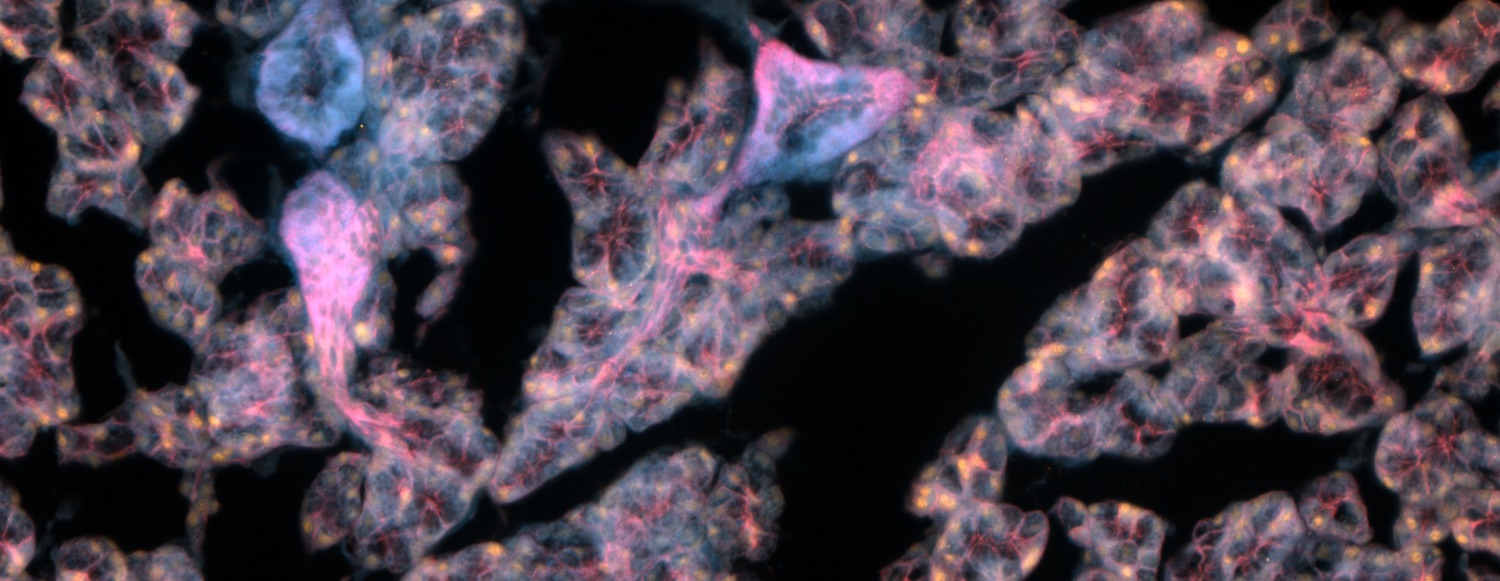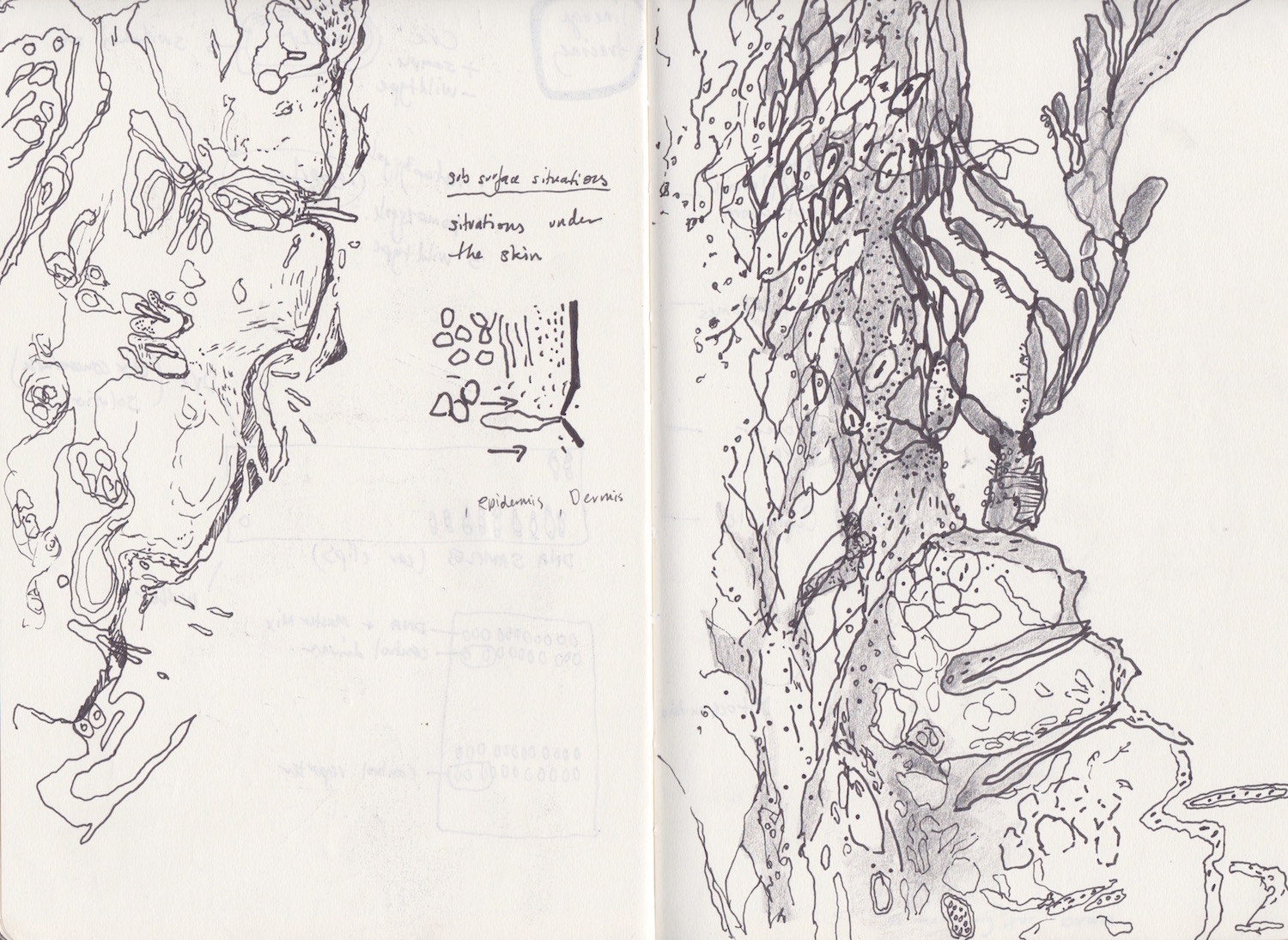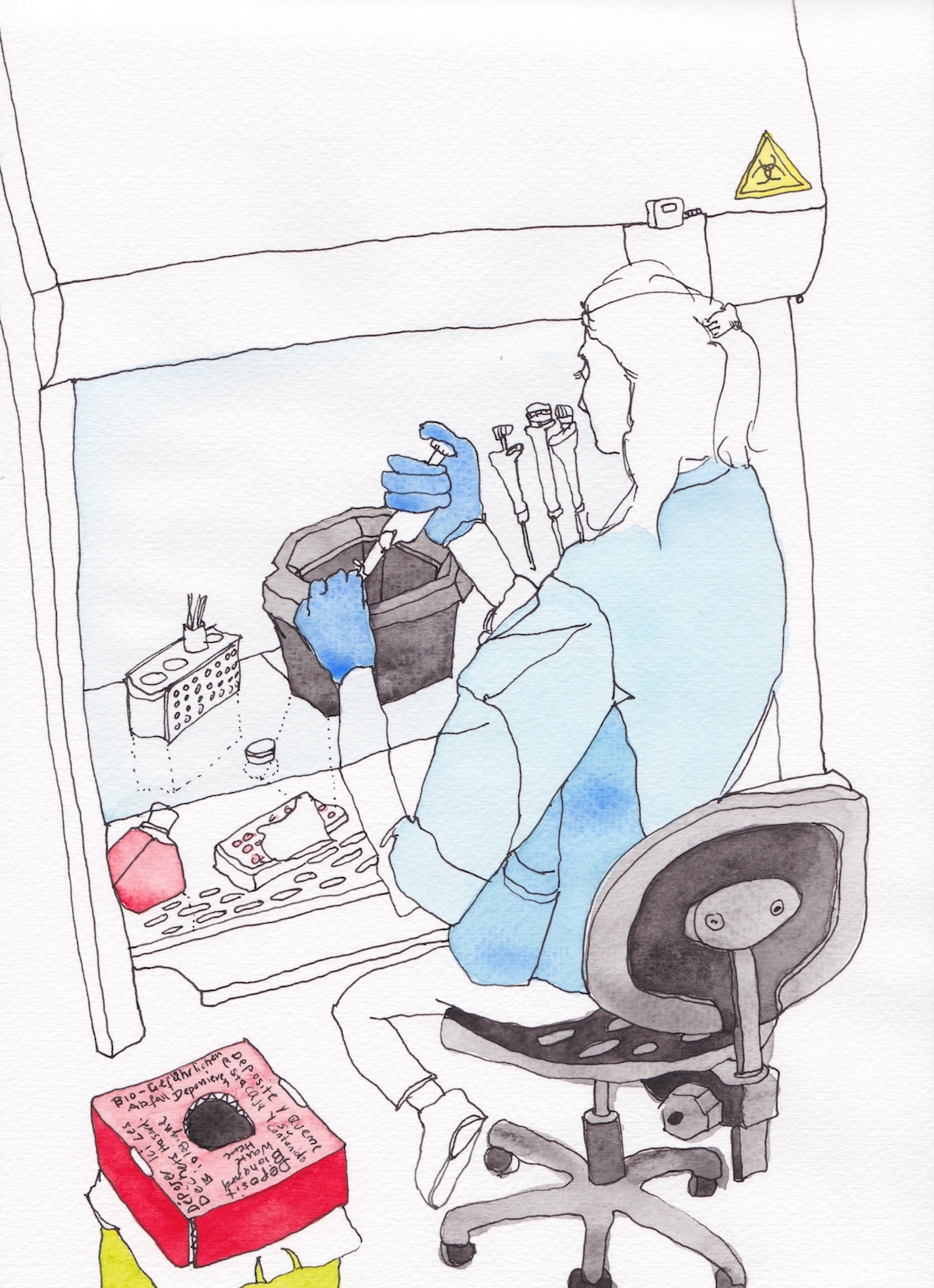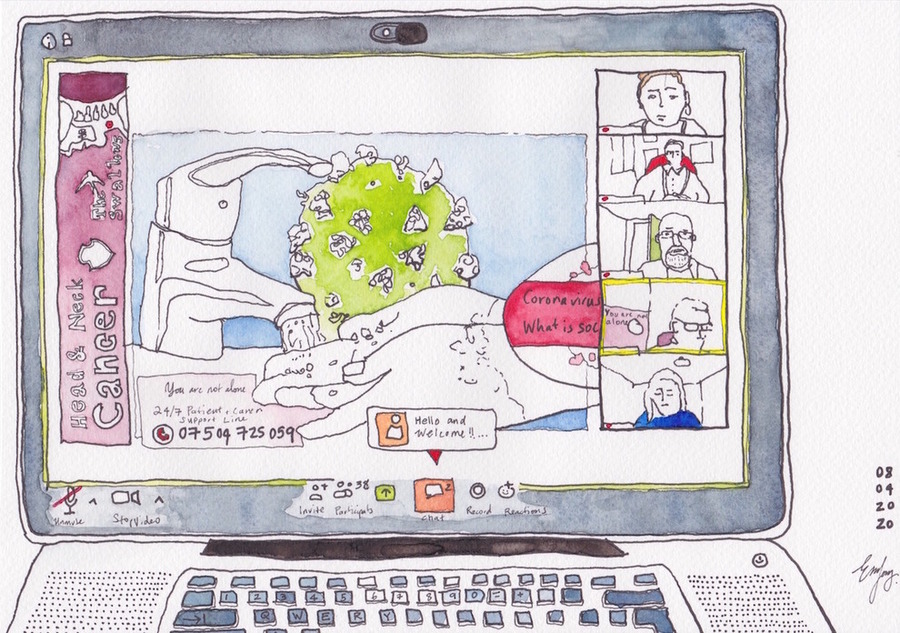 Observing The Swallows Group hosting the first online patient and carer meeting for head and neck cancer - April 8th 2020
Observing The Swallows Group hosting the first online patient and carer meeting for head and neck cancer - April 8th 2020
In this current moment, our screens are the communal spaces in which we gather. I am not sure about you but for me this is taking some getting used to. I am a listener, an observer, and I can find the introverted part of myself in a group Zoom room having not said a word for quite a while. Navigating the new cues of social engagement can be overwhelming at times. However, what I am enjoying about this moment are the questions that are arising around the ways that we build 'normal' and how we can harness our collective creativity to be curious and to lean in, looking respectable...at least from the waist up.
On Wednesday evening of last week, Dr Elaine Emmerson and I were invited to attend the first online meeting for patients, carers and clinicians, hosted on Zoom by The Swallows Head and Neck Cancer Support Group. The meeting was attended by roughly 60 participants from all across the globe. And can I tell you, it was incredible. We heard directly from patient advocates and clinicians on the front line about how this pandemic is affecting the community. For two hours the World felt like a safe and supportive village in that space. I think that my favourite moment may have been when Chris Curtis, the Director of The Swallows Group, respectfully and momentarily muted an expert to remind them about keeping language accessible! I sketched while I listened. It feels like an important moment to document history as it happens in any way possible.
With social distancing being the new norm, community is a precious resource for care and resilience, and both Elaine and myself were very grateful and humbled to witness this event. The clear message to patients and carers living through this pandemic is that you are seen and heard and that you are not alone.
The next meeting is the 13th of May between 7-8:30pm (BST). You can register and join from anywhere in the world by sending your name and email to chris@theswallows.org.uk. For more info visit www.theswallows.org.uk.
Be safe, be kind and stay at home.
Thank you for reading,
Emily
 Wednesday, April 22, 2020 at 2:49AM
Wednesday, April 22, 2020 at 2:49AM  Emily Fong 2020 | The Pause I | Surgeons in the tea room, St John's Hospital, LivingstonHow weird is time right now? In the same breath it feels like both a moment and a lifetime ago that I was observing head and neck surgery at St John’s Hospital in Livingston. In many ways this time to reflect has been extremely valuable for re-evaluating purpose and intention. The purpose of my presence in the operating theatre was to observe what many patients experience in their treatment journey for head and neck cancer, via the approachable medium of drawing. As an honorary member of the Emmerson Lab, I report back to Dr. Emmerson and her team what I have seen, a way to connect them to the patients the science aims to influence. My particular focus is their focus; the salivary gland, and this project is about communication, community and flow in more ways than one. So here I am going with that flow.
Emily Fong 2020 | The Pause I | Surgeons in the tea room, St John's Hospital, LivingstonHow weird is time right now? In the same breath it feels like both a moment and a lifetime ago that I was observing head and neck surgery at St John’s Hospital in Livingston. In many ways this time to reflect has been extremely valuable for re-evaluating purpose and intention. The purpose of my presence in the operating theatre was to observe what many patients experience in their treatment journey for head and neck cancer, via the approachable medium of drawing. As an honorary member of the Emmerson Lab, I report back to Dr. Emmerson and her team what I have seen, a way to connect them to the patients the science aims to influence. My particular focus is their focus; the salivary gland, and this project is about communication, community and flow in more ways than one. So here I am going with that flow. 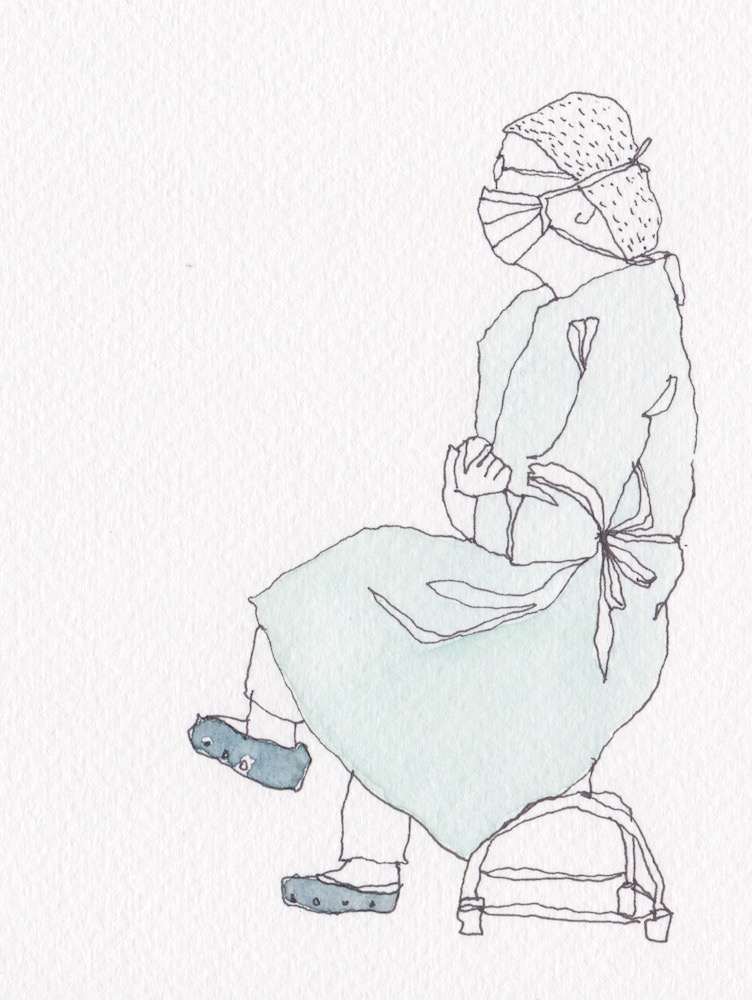 Emily Fong 2020 | The Pause II | Surgical nurse in the operating theatre, St John's Hospital, Livingston
Emily Fong 2020 | The Pause II | Surgical nurse in the operating theatre, St John's Hospital, Livingston Emily Fong | Comments Off |
Emily Fong | Comments Off | 